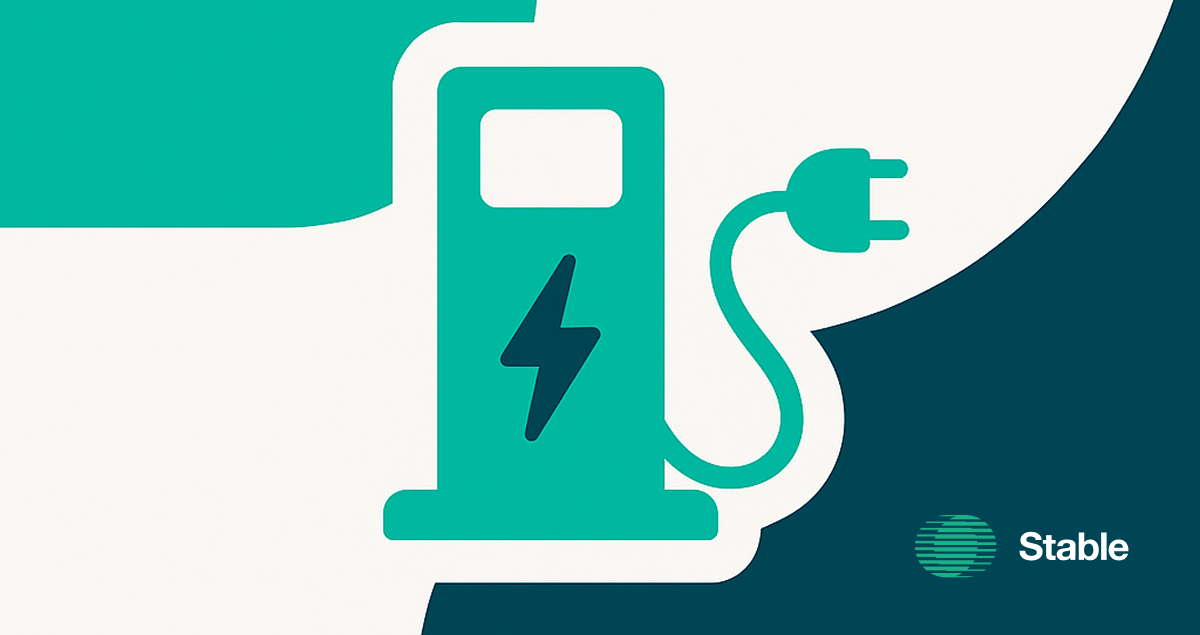
The EV charging market is shifting, and so is the opportunity. While headlines focus on slowed EV sales and stalled rollouts, a quieter trend is emerging. Utilization is climbing. Chargers are busier than ever. For investors paying attention, this is where growth is quietly starting to compound.
Jigar Shah recently wrote about this shift in a piece on LinkedIn, framing it as EV charging's "CarFax moment," a point where smarter diligence can unlock real upside. In his post, he pointed to the need for site-level clarity and gave Stable a shout for helping investors understand what’s really happening on the ground.
We’ve had dozens of conversations since then with teams leaning into that opportunity, and this piece outlines what they’re doing differently.
Roll-up potential is real, but diligence is everything
Across the country, thousands of chargers are undervalued. Some are quietly outperforming. Others were sited poorly or priced inefficiently. At a glance, they might all look similar, yet their financial performance tells a different story.
There are now over 200,000 public charging ports across more than 70,000 locations in the U.S., according to the DOE’s Alternative Fuels Data Center, with new stations coming online every week. But growth alone doesn’t tell the full story.
As Jigar pointed out, some networks are seeing real traction. EVgo reported that utilization more than doubled over the past two years, and Electrify America saw a significant increase in both energy dispensed and session volume (EA Annual Report to EPA).
But that momentum isn’t consistent. Our own analysis of more than 150,000 public chargers shows a wide spread in performance. Utilization ranges from over 20% at top-performing sites to under 2% at the low end (Stable EV Charger Utilization Index). The gap is stark.
Performance varies not just between networks, but from site to site. EV charging doesn’t follow a one-size-fits-all model. These assets live or die by their location, pricing, uptime, and the behavior of local drivers.You cannot model them on averages. You have to evaluate them site by site.
Charging networks are starting to look more like real estate portfolios
When you buy a charger, you're buying future usage. That usage depends on how often drivers plug in, how much they pay, and whether the charger stays online. All of that can vary block by block, even within the same city.
Until recently, most investors couldn’t see that variation clearly. But that is changing. Stable provides location-level forecasts, utilization benchmarks, and pricing data that are reshaping how diligence gets done and helping investors understand what they are actually buying.
What the best investors are doing differently
One dynamic we keep seeing: developers and investors often come to the table with different lenses. Developers are focused on getting projects built. Investors need to understand long-term performance.
The groups asking hard questions and doing site-by-site diligence are the ones finding upside. Even small deployment errors can compound quickly. In one real-world example, under-deploying by just one charger at a site led to a $300K loss in gross profit over five years. Scale that across a 500-site portfolio and you're looking at $150M in missed opportunity.
And it's not just about how many chargers you install, it's also where and how you do it. We've seen sites with identical configurations just a few miles apart perform drastically differently. One generates more than $1,000 in profit per charger each month. The other becomes a stranded asset, losing money due to low usage and high demand charges.
Here’s what the best investors are doing:
- Forecasting demand and revenue at the individual site level
So they can prioritize high-traffic locations and avoid stranded assets. - Identifying undervalued stations based on real utilization and pricing data
To spot hidden gems that look unremarkable on paper but outperform in practice. - Comparing returns across portfolios, acquisition targets, and operator partners
To deploy capital where it’s most productive and avoid underperforming partners. - Using data to shape both pre-deal strategy and post-deal performance
To improve both upfront investment decisions and long-term portfolio health.
These are not theoretical models. Investors are starting to use them to shape diligence and spot deals that would otherwise get overlooked.
Why this matters right now
More charging companies are coming up for sale. Regional networks, hardware-backed platforms, and even public players are in play. But the window to act will not stay open for long.
There is capital waiting to be deployed. The groups who are ready to evaluate sites quickly and confidently will have the edge.
See how Stable helps investors get site-level clarity with a tour of Stable Evaluate, or reach out to our team to learn more.
Schedule a demo
Schedule a 30-min time-slot with us directly, or send us a message if there's something else we can help with.